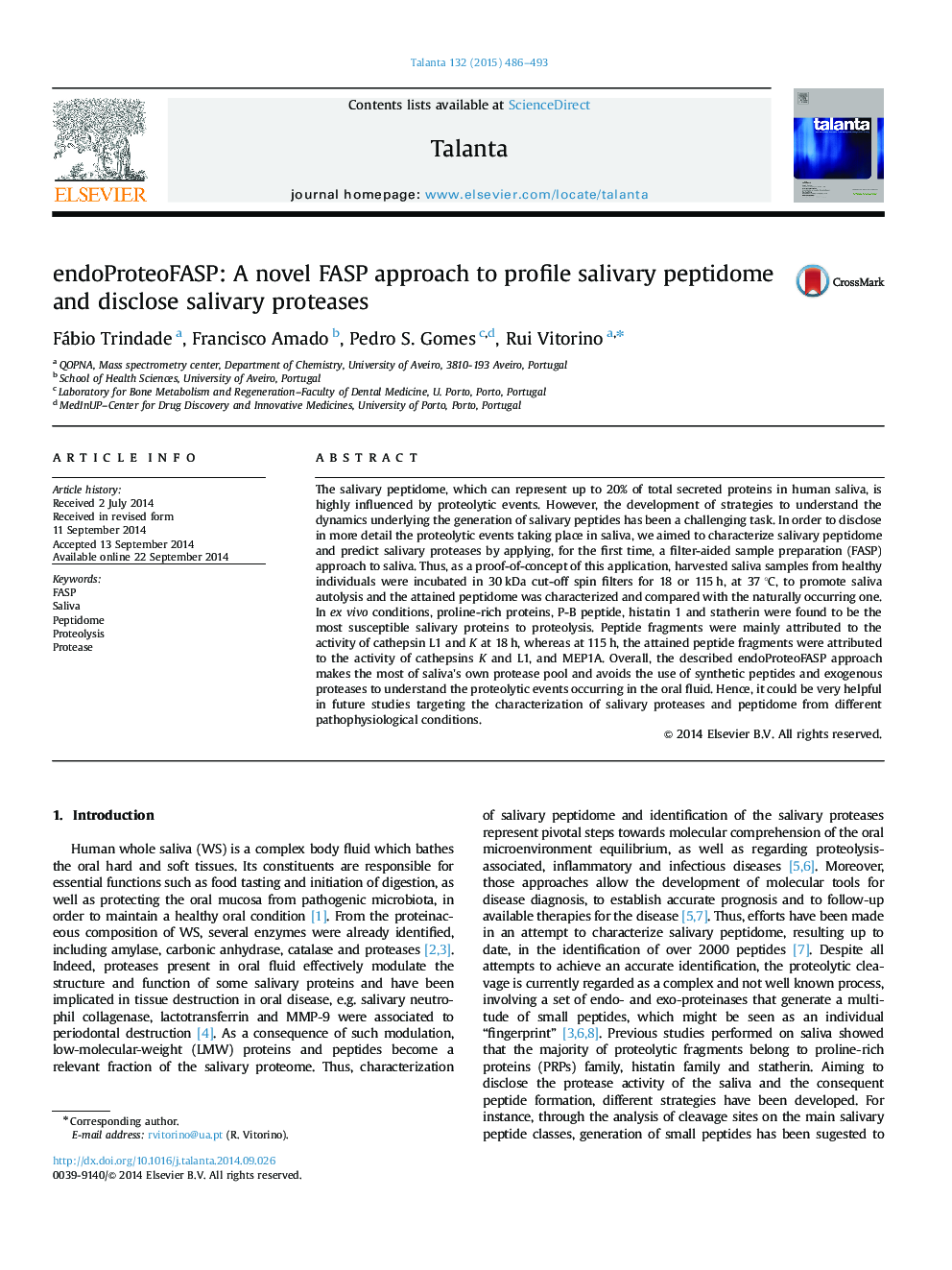| Article ID | Journal | Published Year | Pages | File Type |
|---|---|---|---|---|
| 1242044 | Talanta | 2015 | 8 Pages |
•FASP approach was used for the first time to evaluate saliva autolysis.•Cathepsin L1 and K are suggested to be responsible for the new generated peptides.•Higher genatinolytic activity seems to be correlated to more generated peptides.
The salivary peptidome, which can represent up to 20% of total secreted proteins in human saliva, is highly influenced by proteolytic events. However, the development of strategies to understand the dynamics underlying the generation of salivary peptides has been a challenging task. In order to disclose in more detail the proteolytic events taking place in saliva, we aimed to characterize salivary peptidome and predict salivary proteases by applying, for the first time, a filter-aided sample preparation (FASP) approach to saliva. Thus, as a proof-of-concept of this application, harvested saliva samples from healthy individuals were incubated in 30 kDa cut-off spin filters for 18 or 115 h, at 37 °C, to promote saliva autolysis and the attained peptidome was characterized and compared with the naturally occurring one. In ex vivo conditions, proline-rich proteins, P-B peptide, histatin 1 and statherin were found to be the most susceptible salivary proteins to proteolysis. Peptide fragments were mainly attributed to the activity of cathepsin L1 and K at 18 h, whereas at 115 h, the attained peptide fragments were attributed to the activity of cathepsins K and L1, and MEP1A. Overall, the described endoProteoFASP approach makes the most of saliva׳s own protease pool and avoids the use of synthetic peptides and exogenous proteases to understand the proteolytic events occurring in the oral fluid. Hence, it could be very helpful in future studies targeting the characterization of salivary proteases and peptidome from different pathophysiological conditions.
Graphical abstractFigure optionsDownload full-size imageDownload as PowerPoint slide
